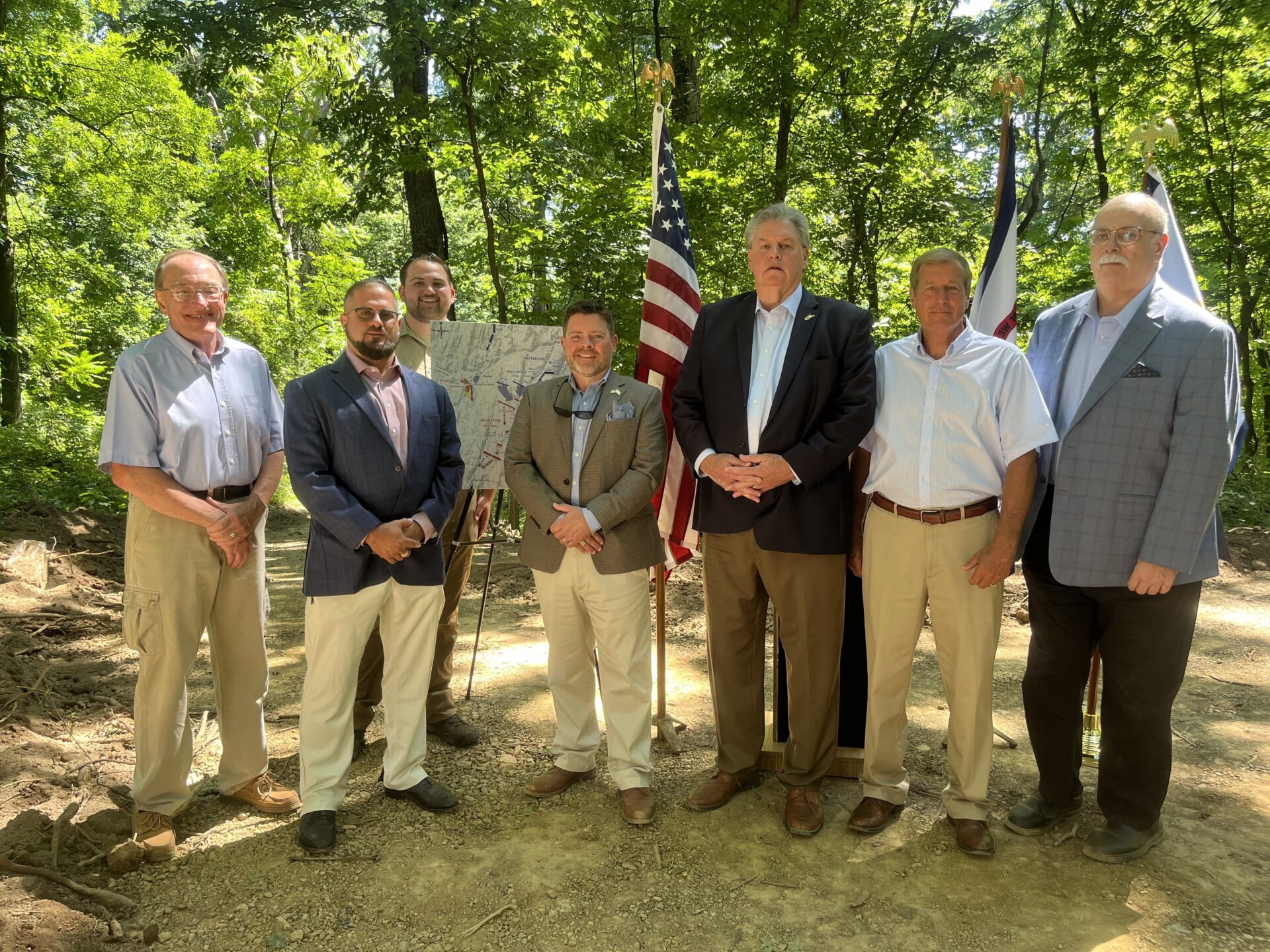West Virginia’s Eastern Panhandle saw major military activity in the Civil War. But, driving through the region today, it can be hard to tell many historic sites exist.
Over the years, local historic preservation groups have worked to erect markers and monuments across Civil War grounds to spread awareness of the history they contain.
Now, one preservationist group is partnering with the local government to create the first battlefield park in Berkeley County, and preserve the site for years to come.
Keven Walker is CEO of the Shenandoah Valley Battlefields Foundation, the Virginia-based nonprofit leading the park’s construction. The park will be erected on a 10-acre plot of land where the Battle of Hoke’s Run was fought.
“You’re going to have all of the visitor facilities that you would expect at a state park,” he said. “You’re going to have restroom facilities here, parking facilities. You’ll have a pavilion here. There’ll be an outdoor learning area for youth.”
The 1861 battle marked the first Civil War conflict in the Shenandoah Valley, according to Gary Gimbel, president of the Falling Waters Battlefield Association.
“They hadn’t come across the line into West Virginia before,” he said. “This is the very first time.”
Photo Credit: Jack Walker/West Virginia Public Broadcasting
Gimbel’s group works to preserve and interpret the history of the Falling Waters Battlefield, located near the Hoke’s Run site and West Virginia’s Maryland border.
The new park will also feature an “interpretive and recreational trail” that connects with the battlefield’s history, according to Walker.
“It will bring you face to face with the history of the site through outdoor exhibits, panels and interpretative signage,” he said.
Gimbel said using the park as an opportunity to spread awareness about West Virginia’s Civil War history like this is a “big deal” for local Civil War buffs and the community at large.
The historic element of the park marks an opportunity to tell residents, “Look, something happened here,” Gimbel said.
“This isn’t just where you live. There’s actually history here that you probably don’t know about, and we would like to explain it to you,” he continued. “The idea [is] being able to combine education with this park.”
The announcement of the new park also comes as counties in the Eastern Panhandle grapple with new development.
West Virginia has the third-highest percentage of forest cover among the fifty states, according to a 2016 survey from the U.S. Department of Agriculture.
Photo Credit: Jack Walker/West Virginia Public Broadcasting
But the Eastern Panhandle is one of the only regions in the state that experienced population growth last year. Some residents worry the rate of development could jeopardize their access to the greenspaces that make West Virginia feel like home.
Berkeley County Commissioner Steve Catlett says counties in the Eastern Panhandle need to plan ahead, which makes the creation of new outdoor recreation spaces like the battlefield park even more important.
“We’re growing too fast and our infrastructure can’t keep up. As we keep building more and more homes and more and more development, we need to set aside more acreage for public recreation and parks,” he said. “People can go and enjoy their well-being … [and] being outdoors.”
Walker said his organization hopes the park can offer more than just an educational opportunity or a new outdoor venue.
As political divides make people feel more distant, he said sitting with American history and examining our place in it can help overcome barriers to understanding one another.
“We are a nation that is constantly being told that our history should divide us, and that’s just not the case,” he said. “Our history is what should bring us together as a people, remind us of the struggles of past generations [and] give us inspiration and strength for the struggles in our own time.”
Walker said his organization aims to complete construction this fall, and to open the park to the public in 2025. From there, he’s excited to see how local community members connect with the history all around them.
“These quiet little pockets of history, these battlefield parks, these outdoor classrooms are places where all of that remembrance can happen,” he said.
